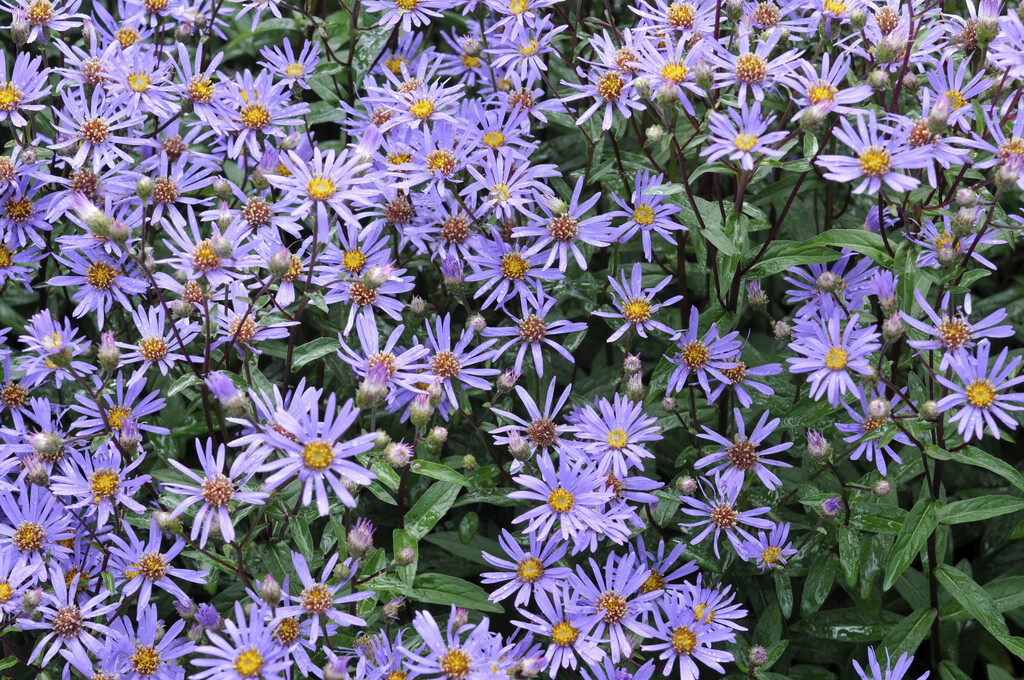Eurybia radula
rough wood aster
A vigorous, clump-forming deciduous herbaceous perennial with narrow, lance-shaped green foliage and upright stems of daisy-like violet-purple flowers which appear in the summer and flower through until autumn
Size
Ultimate height
0.1–0.5 metresTime to ultimate height
2–5 yearsUltimate spread
0.1–0.5 metresGrowing conditions
Moisture
Moist but well–drained, Well–drainedpH
Acid, Alkaline, NeutralColour & scent
| Stem | Flower | Foliage | Fruit | |
| Spring | Green | |||
|---|---|---|---|---|
| Summer | Blue Purple | Green | ||
| Autumn | Blue Purple | Green | ||
| Winter |
Position
- Full sun
- Partial shade
Aspect
East–facing or North–facing or South–facing or West–facing
Exposure
Exposed or Sheltered Hardiness
H4Botanical details
- Family
- Asteraceae
- Native to GB / Ireland
- No
- Foliage
- Deciduous
- Habit
- Bushy, Clump forming
- Genus
Eurybia is a genus of woody perennials. Leaf shape can differ between varieties and flowers can be white or light pink to purple with yellow corona.
- Name status
Unresolved
- Plant range
- E Canada, NE USA
How to grow
Cultivation
Grow in moist but well-drained humus-rich soil in full sun or part shade. Apply a thick mulch in autumn
Propagation
Propagate by division. Divide every few years to maintain vigour
Suggested planting locations and garden types
- Cottage and informal garden
- Gravel garden
- Patio and container plants
- Cut flowers
- Flower borders and beds
Pruning
Cut back in early spring
Pests
May be susceptible to slugs, snails, leaf and bud eelworms and aphids
Diseases
May be susceptible to grey moulds, fusarium wilt and a leaf spot
Love gardening
Sign up to receive regular gardening tips, inspiration, offers and more
View our Privacy Policy
Get involved
The Royal Horticultural Society is the UK’s leading gardening charity. We aim to enrich everyone’s life through plants, and make the UK a greener and more beautiful place.

